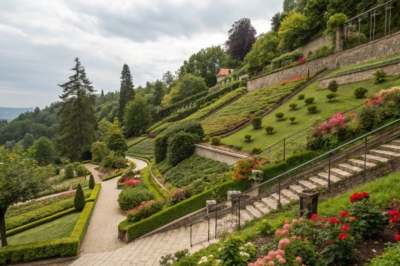1. Paver Patios
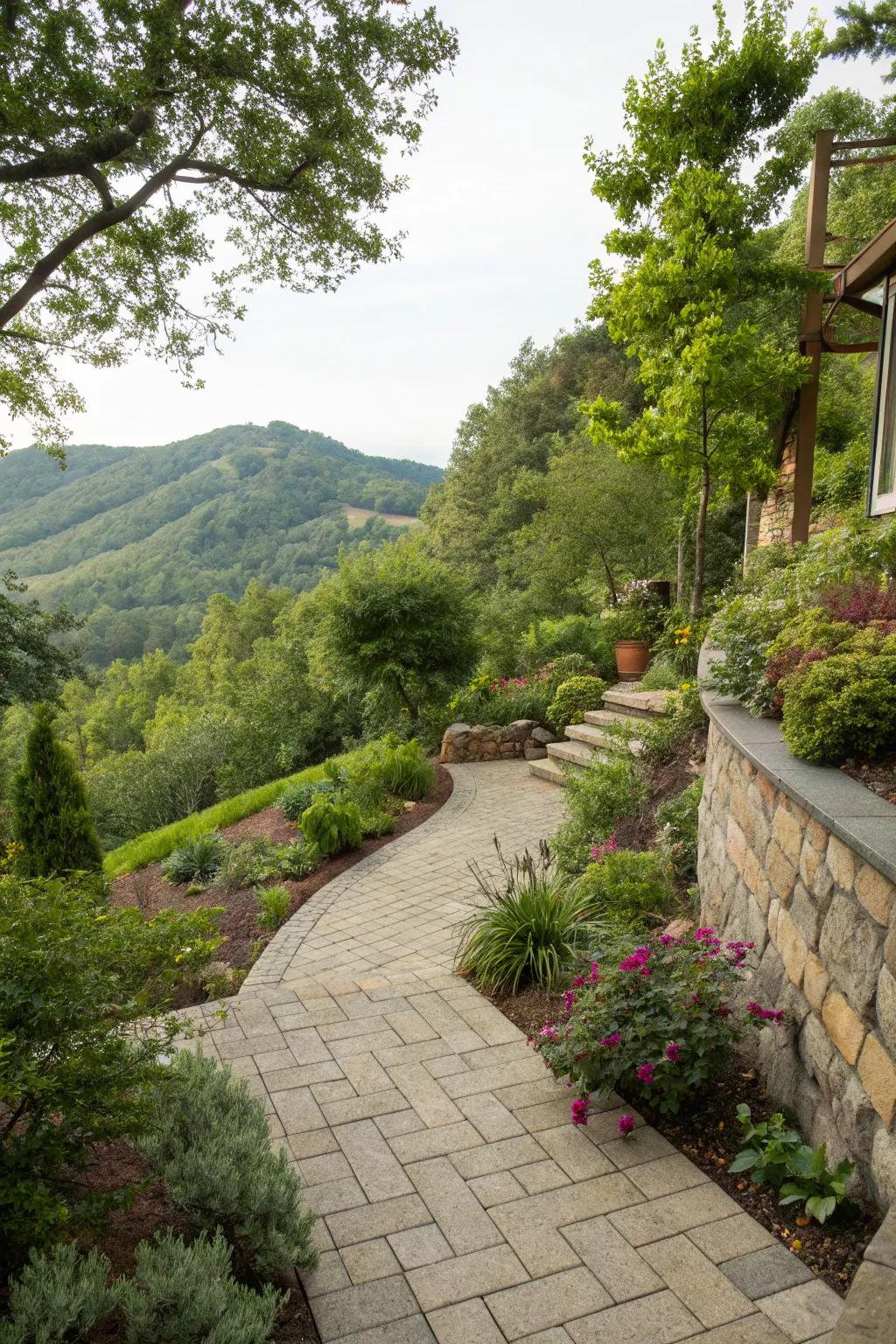
Install paver patios for a durable and appealing seating area. I’ve found that pavers withstand the test of time and require minimal upkeep.
Give these a look:
- Interlocking Concrete Pavers: Enhance your outdoor space with durable pavers, designed for beauty and longevity in any landscape.
- Paver Base Panels: Streamline your patio installation with lightweight, easy-to-use paver base panels for strong foundations.
- Polymeric Sand for Paver Joints: Secure your paver patio with polymeric sand, reducing weed growth and enhancing stability between pavers.
2. Minimal Lawn Areas
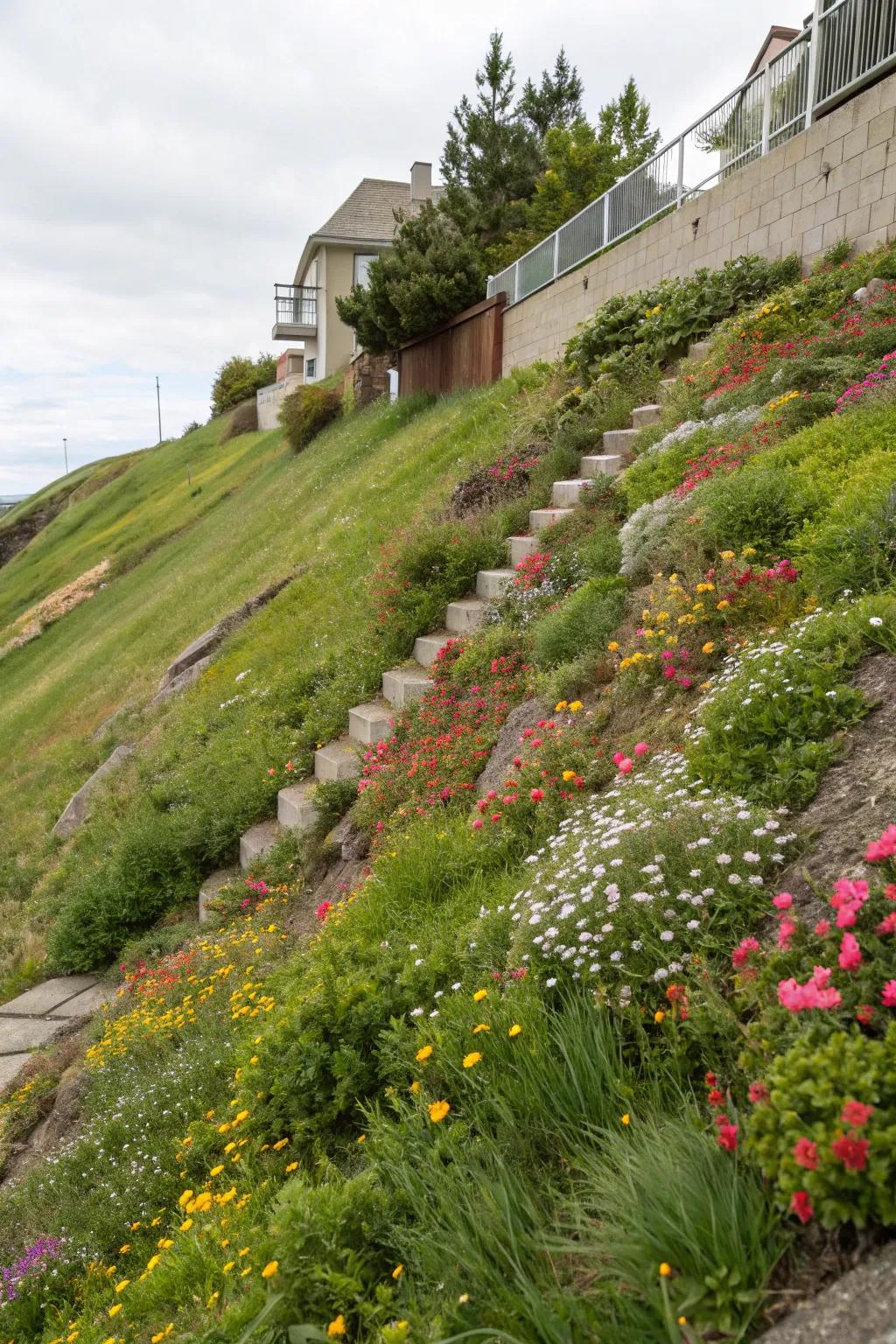
Reduce traditional grass with minimal lawn areas to cut down on maintenance and water use. I always suggest opting for ground covers or wildflower meadows instead.
Items that may come in handy:
- Low-Maintenance Wildflower Seed Mix: Transform your slope with colorful wildflowers that require minimal upkeep and watering. Perfect for eco-friendly spaces!
- Drought-Tolerant Ground Cover Plants: Opt for these easy-care ground covers to minimize watering and maintain a vibrant landscape effortlessly.
- Erosion Control Landscape Fabric: Safeguard your slope with erosion control fabric while enhancing plant growth and hillside stability.
3. Edible Gardens
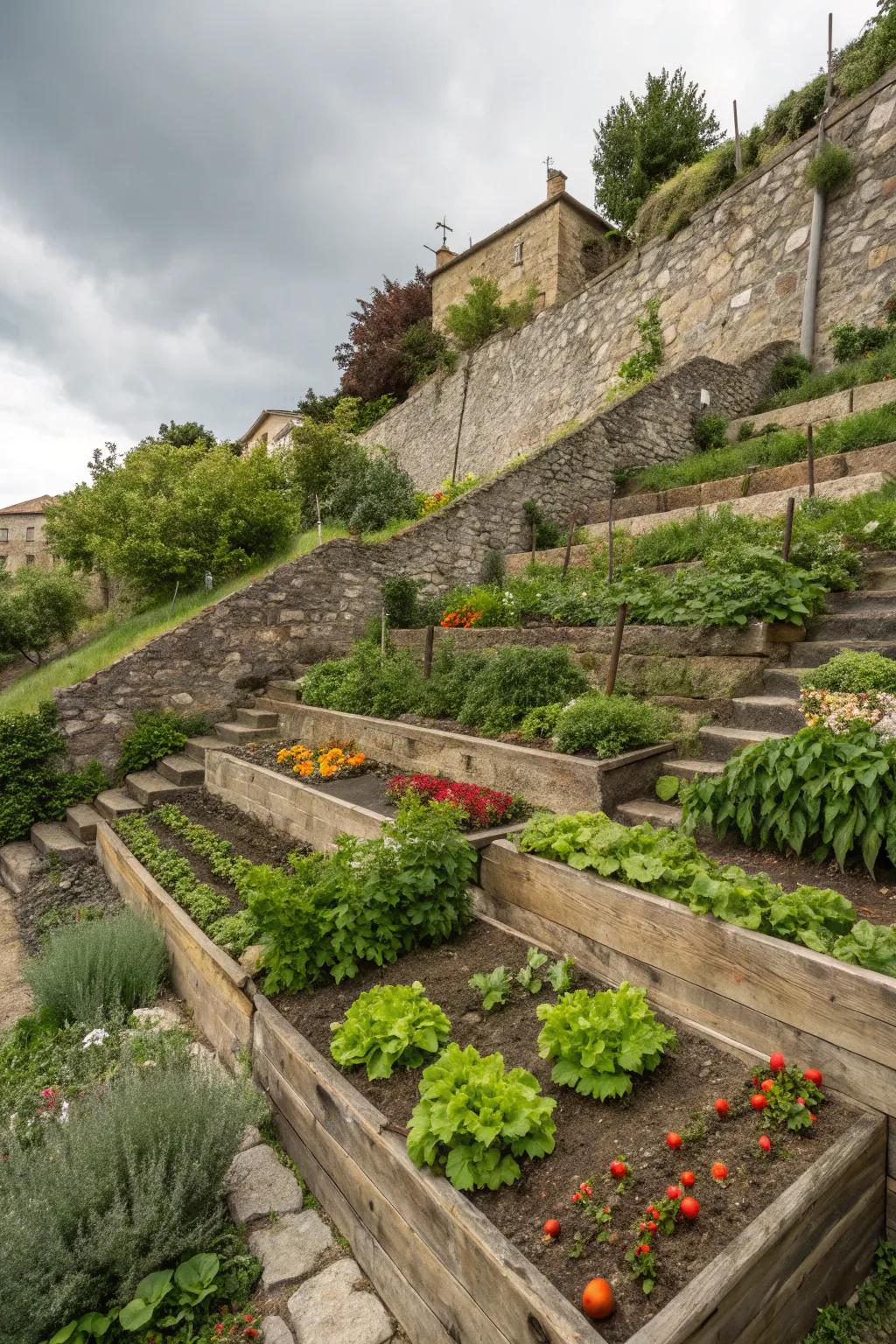
Why not plant an edible garden on your slope? It’s a delicious way to make the most of your space while keeping maintenance low.
Try these:
- Raised Garden Bed Kits: Install raised garden beds to optimize growth and ease maintenance on your sloped terrain.
- Organic Vegetable Seeds Variety Pack: Cultivate an array of vegetables effortlessly with a diverse pack of organic seeds.
- Drip Irrigation System Kit: Ensure efficient watering of your edible garden with an easy-to-install drip irrigation kit.
4. Layered Plantings
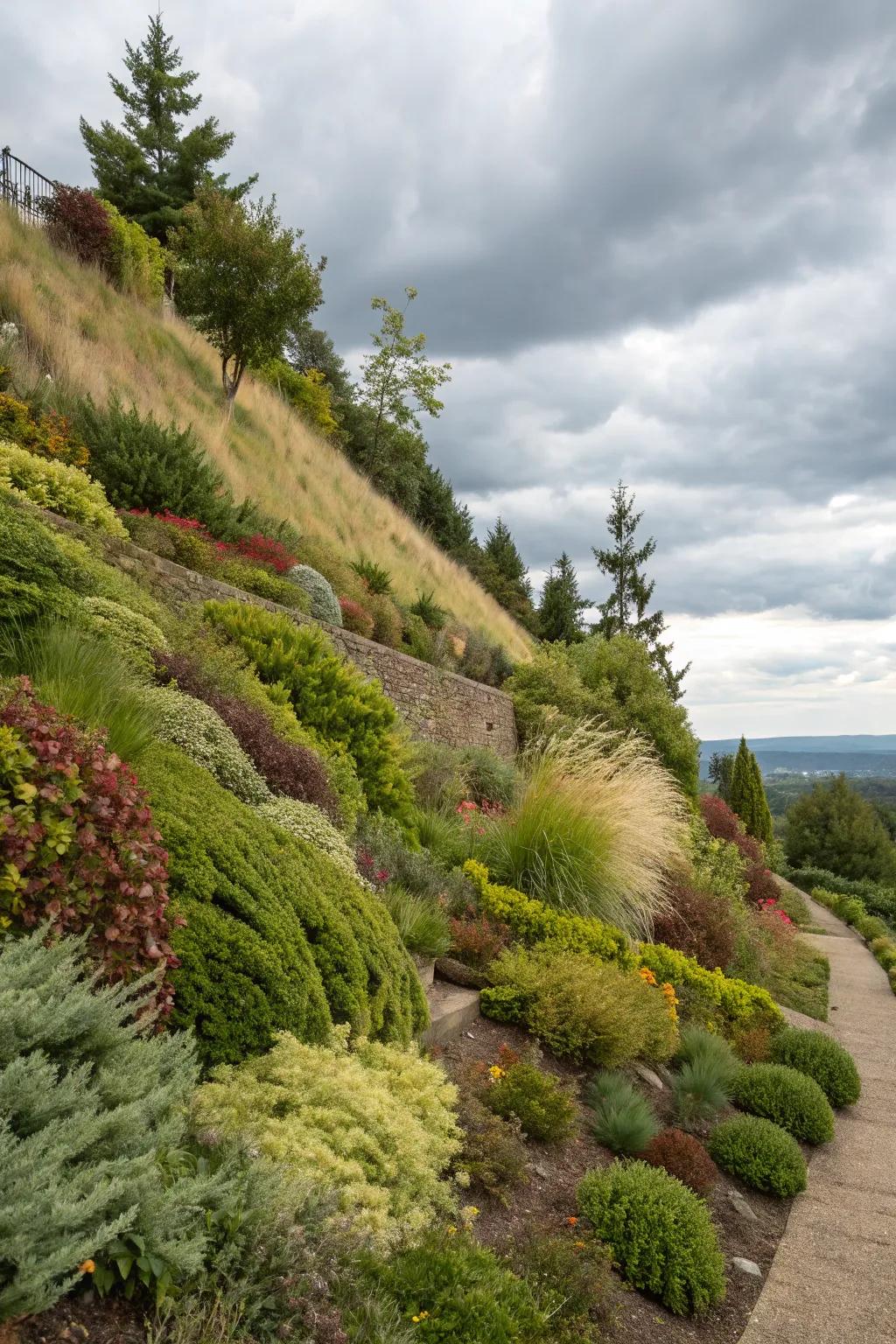
Using layered plantings can transform a slope into a lush tapestry of textures and colors. I recommend combining ground covers, bushes, and ornamental grasses to create depth and visual appeal.
Some handy options:
- Ornamental Grass Seed Mix: Enhance your slope with ornamental grasses for texture and year-round visual interest.
- Drought-Tolerant Ground Cover Plants: Cover your steep slope with hardy ground covers to reduce erosion and add color.
- Decorative Bushes for Landscaping: Add structure to your garden with easy-care bushes that thrive on slopes.
5. Wooden Retaining Walls
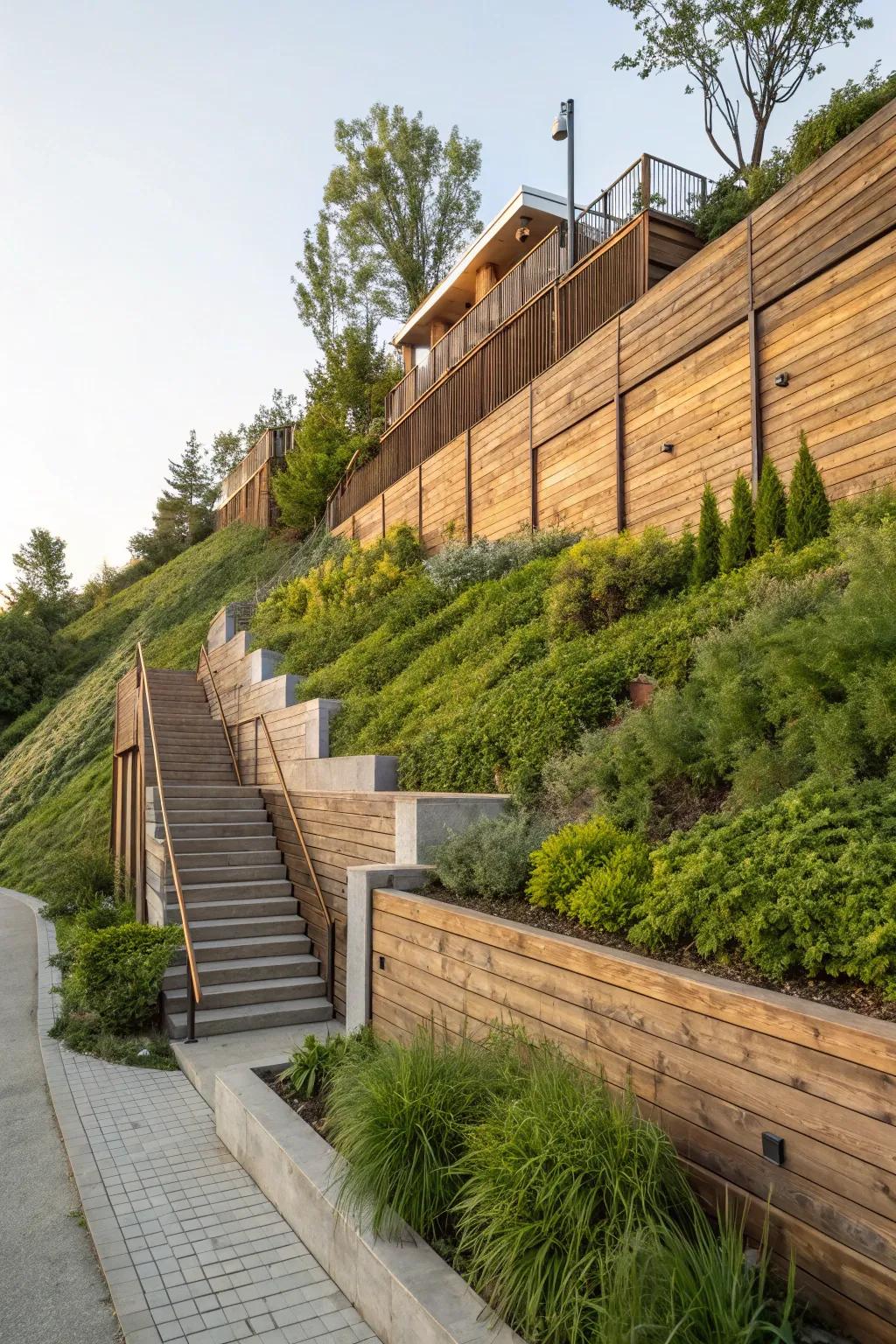
Consider wooden retaining walls for a rustic and natural look. They’re not only functional but also add warmth and charm to any slope.
Maybe worth checking out:
- Pressure-Treated Wood Planks: Elevate your landscape with durable, weather-resistant planks perfect for building retaining walls.
- Outdoor Wood Stain and Sealer: Protect and enhance wooden walls with a stain that resists weather and UV damage.
- Wood Retaining Wall Construction Kit: Get started easily with a complete kit for building sturdy wooden retaining walls.
6. Low Walls and Seating
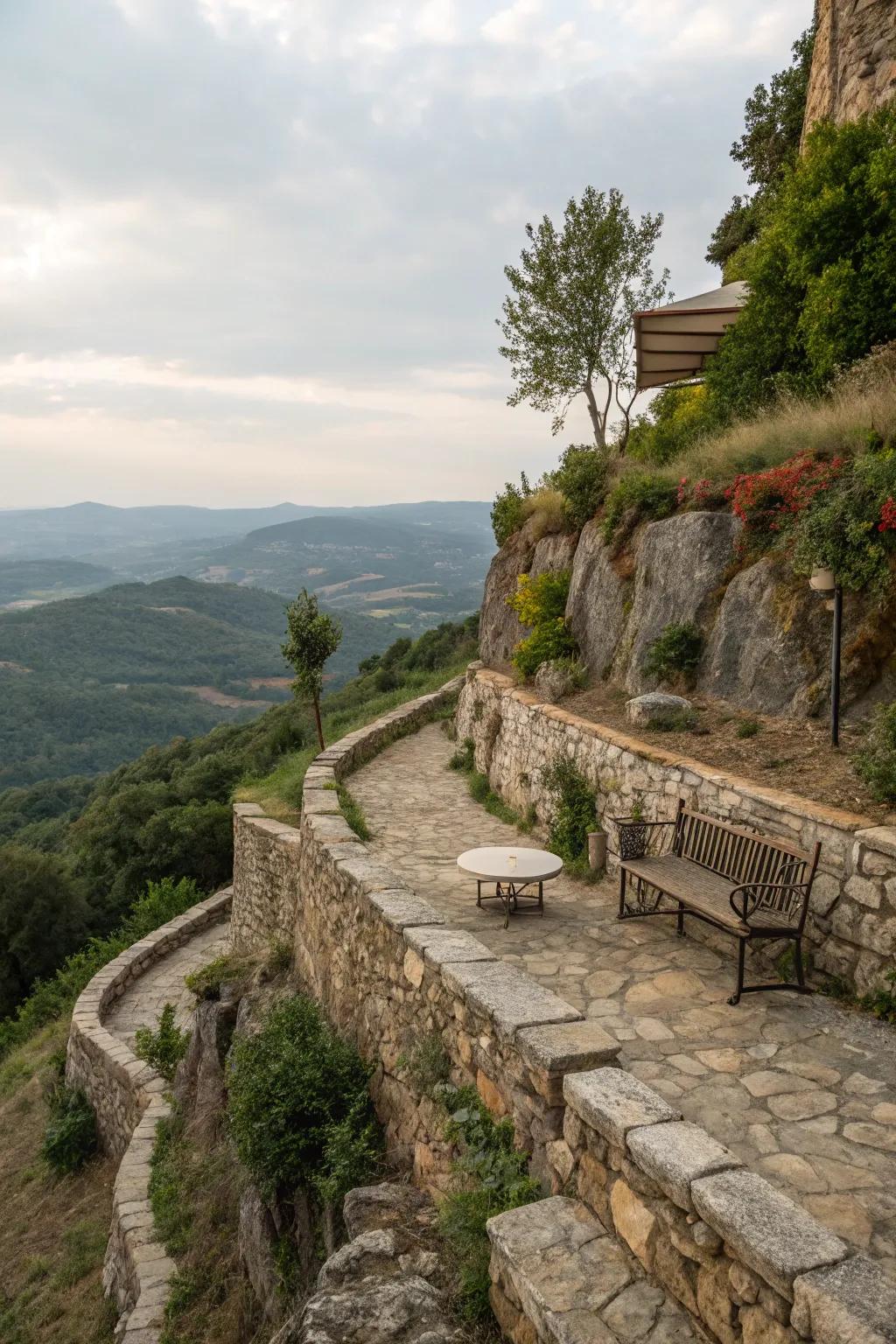
Incorporate low walls and seating areas to create cozy nooks for relaxation. It’s a delightful way to enjoy the view and make the slope more inviting.
A few things you might like:
- Outdoor Stone Veneer Panels: Enhance your slope with rustic stone veneer panels for a natural and durable wall design.
- Weather-Resistant Outdoor Benches: Add style and comfort to your slope with durable, weather-resistant outdoor benches. Relax and enjoy.
- Patio Side Tables: Include a patio side table for convenience and charm in your outdoor relaxation area.
7. Rock Gardens
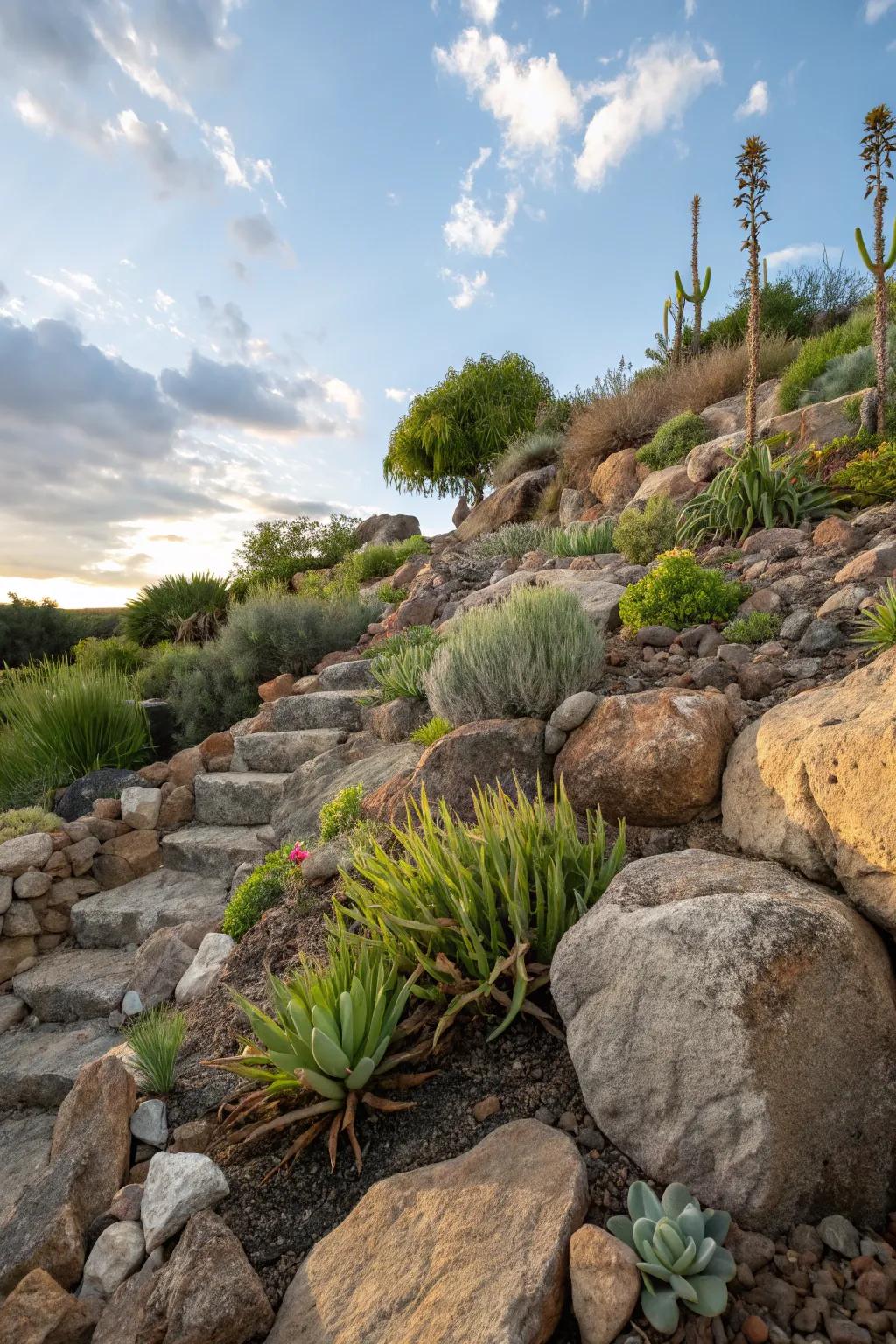
Incorporating rock gardens is a fabulous way to add visual interest while combating erosion. I’ve found that mixing different sizes of rocks and boulders creates a natural look that’s both functional and eye-catching.
Products that could assist:
- Decorative Landscaping Rocks: Enhance your rock garden’s visual appeal with these versatile, natural-looking decorative rocks.
- Heavy Duty Weed Barrier Fabric: Place under rocks to prevent weed growth and aid in water drainage.
- Garden Tools Set: Make rock garden maintenance easy with this durable and comprehensive garden tool set.
8. Terraced Gardens
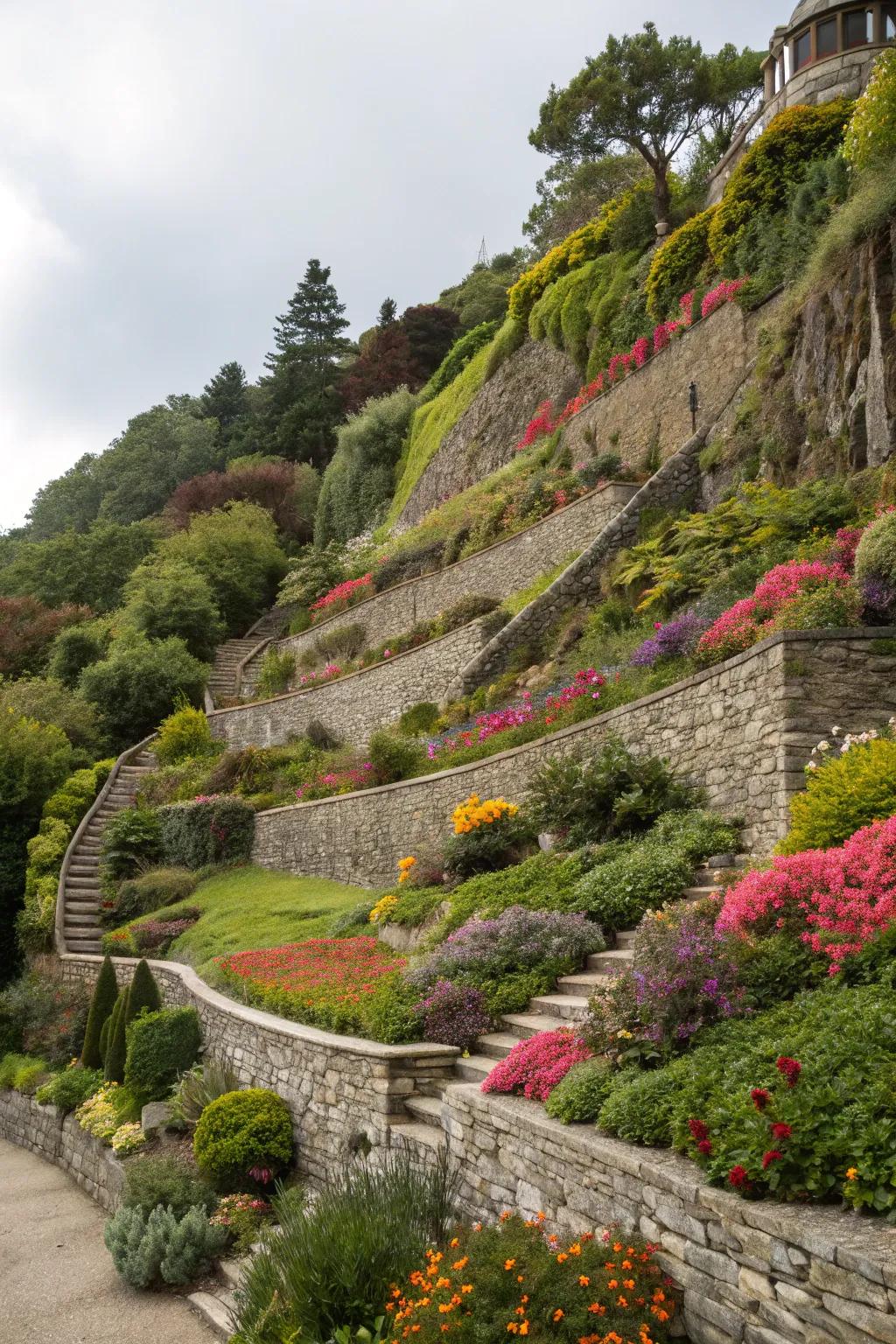
Creating terraced gardens on a slope not only makes the area more accessible but also helps manage erosion. From my experience, using retaining walls to form these terraces can turn a challenging incline into a series of beautiful, manageable planting areas.
A few helpful options:
- Landscape Retaining Wall Blocks: Enhance your garden’s structure with easy-to-install retaining wall blocks for stunning terraces.
- Perennial Flower Seeds Variety Pack: Add vibrant colors to your terraces with a variety of easy-to-grow perennial flowers.
- Garden Hose with Nozzle Set: Effortlessly water your terraced gardens with a durable hose and adjustable nozzle.
9. Pathways and Steps

Adding pathways and steps provides easy access and divides the slope into functional areas. I love using natural stone or gravel for a rustic look that harmonizes with the surrounding landscape.
Might be a good match:
- Natural Stone Stepping Stones: Create rustic pathways with these stones, enhancing harmony with your natural landscape effortlessly.
- Gravel for Landscape Paths: Utilize gravel to design durable paths, adding a refined touch to your garden’s aesthetic.
- Garden Pathway Lights: Illuminate your pathways with eco-friendly lights, increasing safety and beauty after sunset.
10. Vertical Gardens
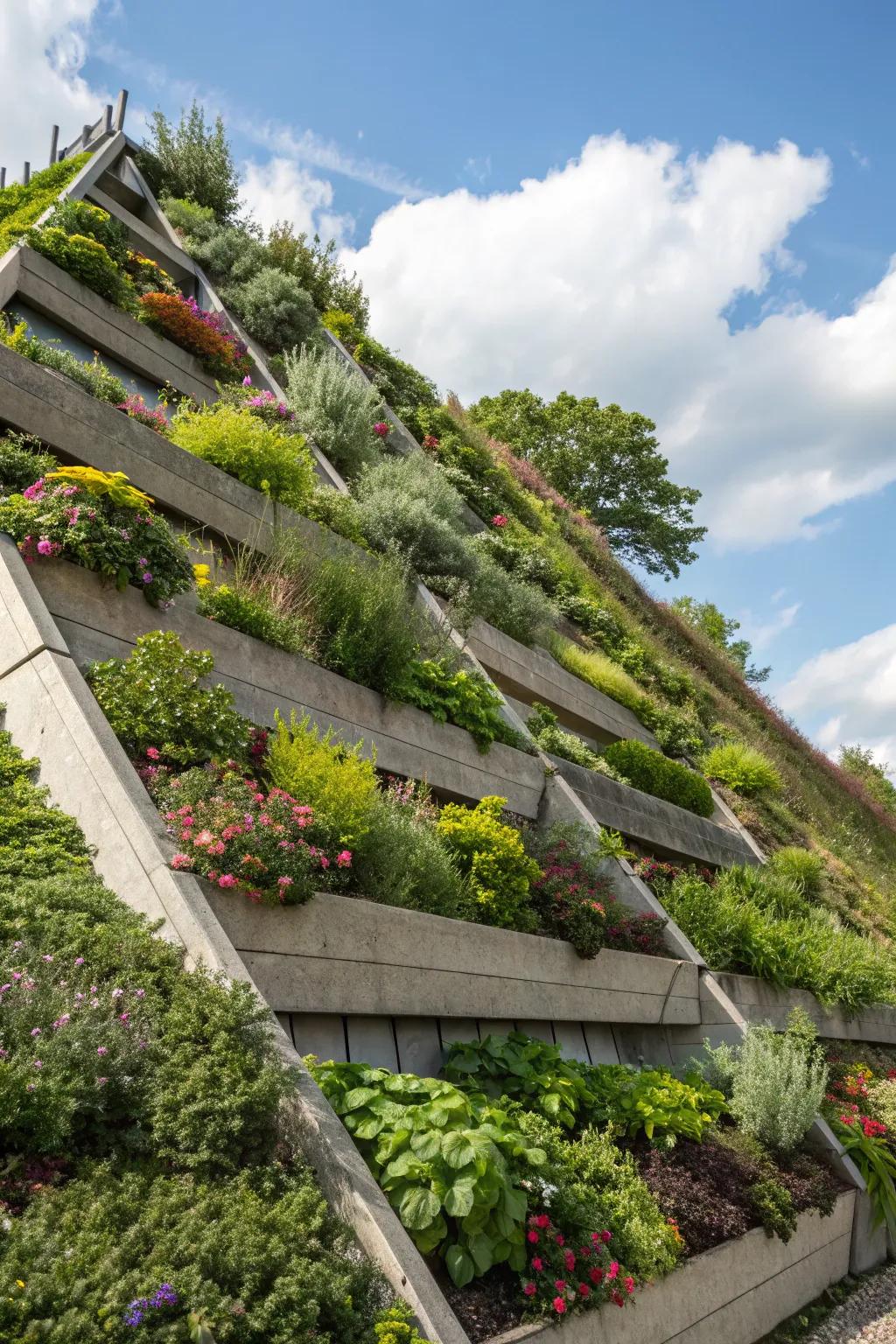
Try vertical gardens for a unique and space-saving approach to slope landscaping. I’ve seen how vertical planters can turn a dull wall into a living masterpiece.
A few suggestions:
- Modular Vertical Garden Planter Kit: Transform your slope with this modular planter kit. Easily create stunning vertical garden displays.
- Wall Mounted Flower Pots: Add color and life by mounting these durable pots on your outdoor walls. Easy to install.
- Automatic Drip Irrigation System: Ensure your vertical garden thrives effortlessly with this automatic drip irrigation system. Save time and water.
11. Water Features
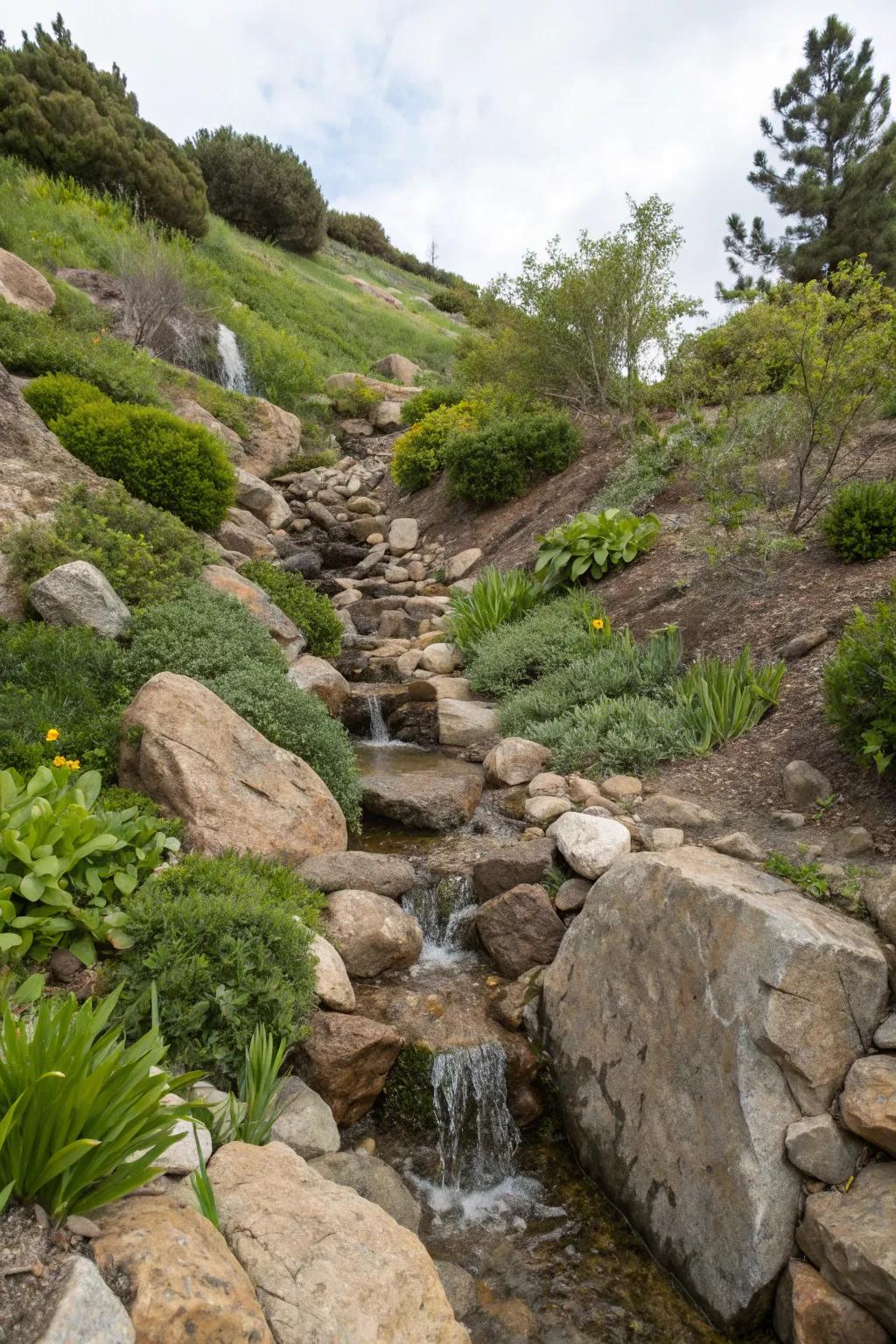
Incorporate small water features or dry creek beds for added charm and erosion control. I’ve seen how a simple bubbling brook or a dry stream can bring a serene vibe to a slope.
May just do the trick:
- Outdoor Water Fountain Kit: Create a tranquil escape with this easy-to-install outdoor water fountain kit for your slope.
- Dry Creek Bed Rocks: Enhance your landscape with natural stones perfect for building a visually appealing dry creek bed.
- Solar Powered Water Pump: Add a sustainable water feature with this efficient solar powered water pump for continuous flow.
12. Berm Plantings
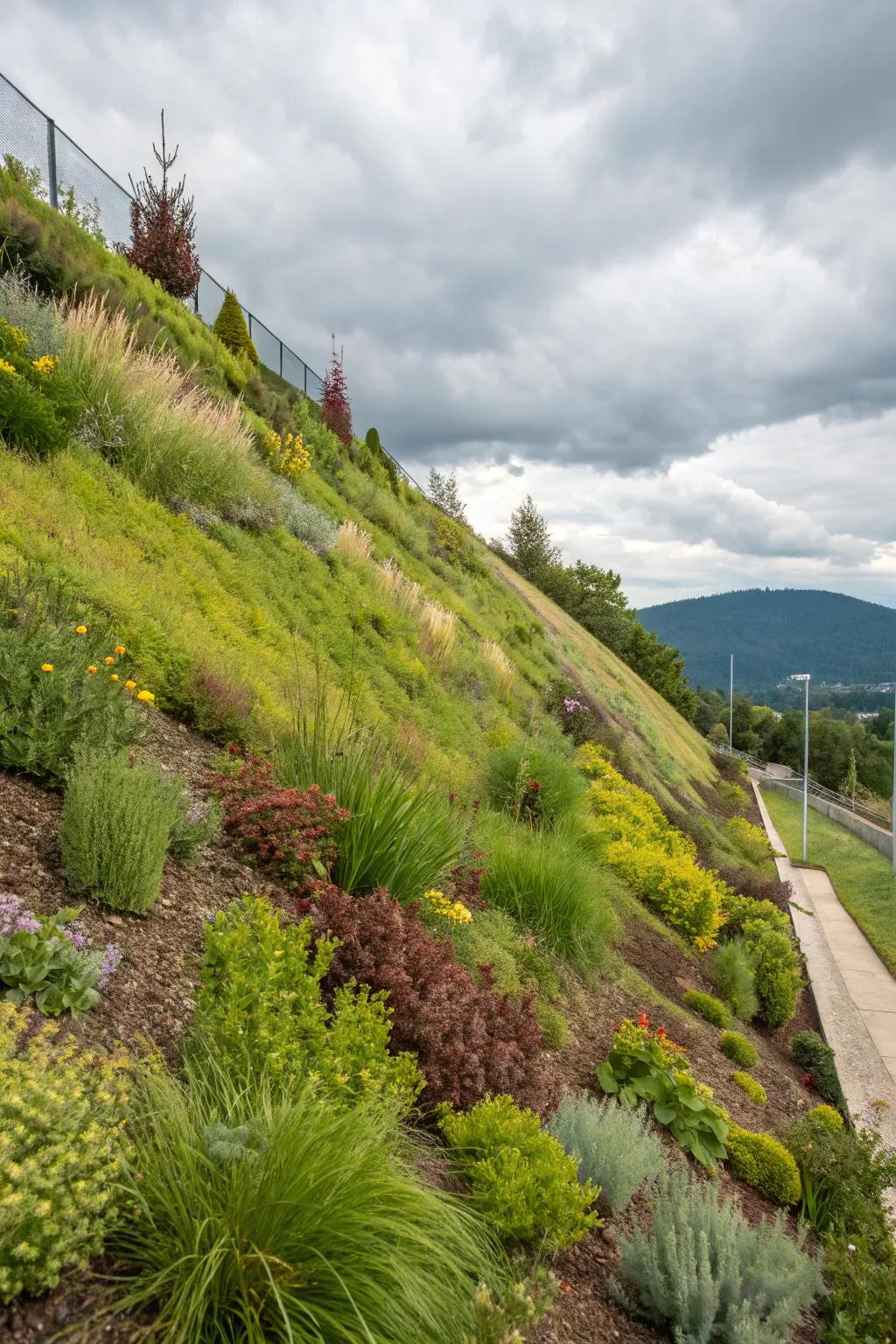
Create berm plantings for a natural and flowing landscape. Berms help manage water flow and add an organic shape to your slope.
Some ideas to consider:
- Drought-Tolerant Grass Seed Mix: Enhance your berm with easy-care, drought-tolerant grasses for a lush, low-maintenance look.
- Organic Landscaping Mulch: Use organic mulch to retain moisture and control weeds for a healthier berm landscape.
- Perennial Wildflower Seeds: Add vibrant color with perennial wildflowers, perfect for maintaining a natural look on berms.
13. Erosion Control Fabrics
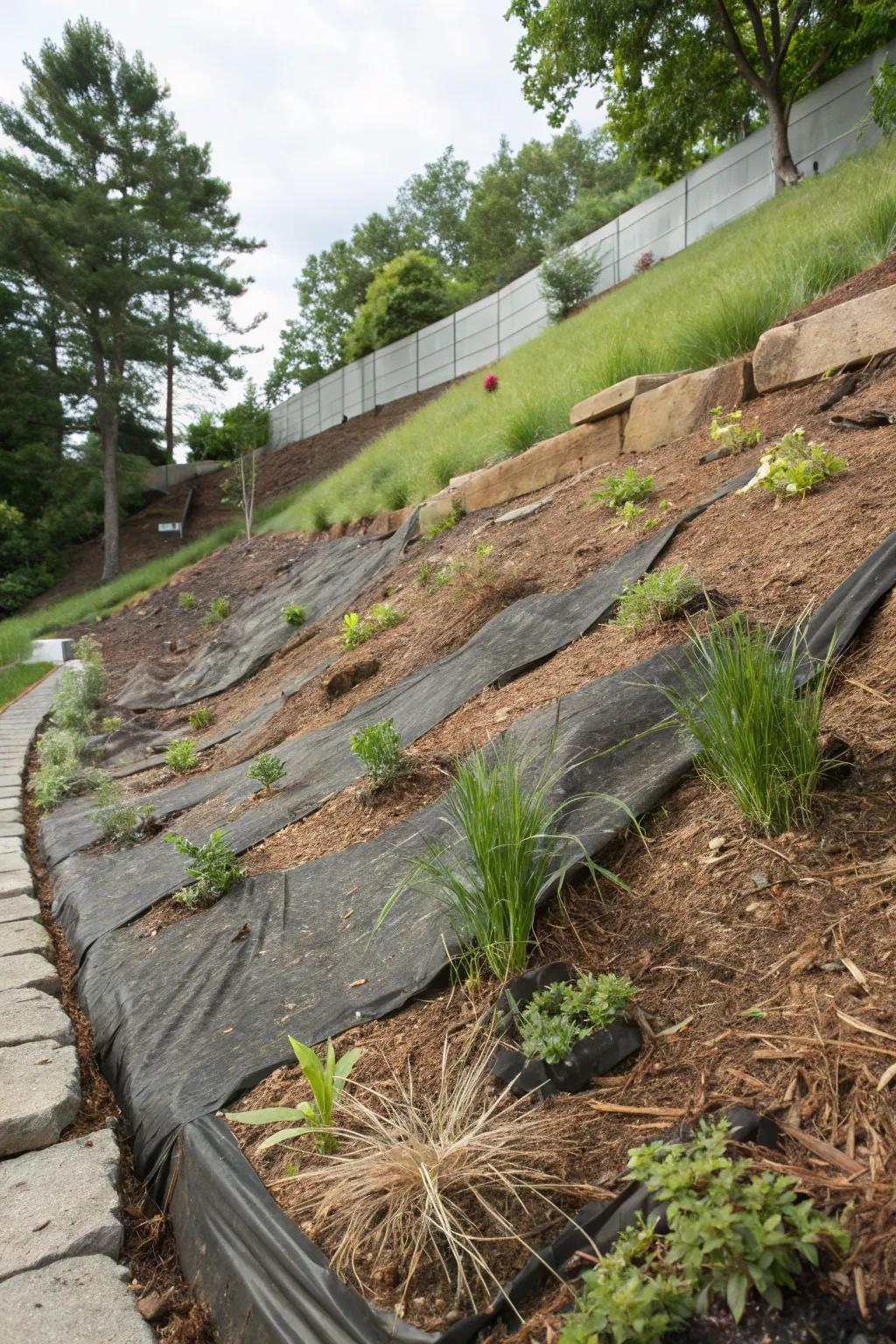
Use erosion control fabrics to stabilize the soil and prevent washouts. These fabrics have been lifesavers in many of my projects, providing a secure base for plantings.
These products might help:
- Biodegradable Erosion Control Fabric Roll: Secure your slope with this eco-friendly fabric, promoting soil stability and plant growth.
- Heavy-Duty Erosion Control Mat: Stabilize steep slopes using this durable erosion control mat, designed for long-term protection.
- Coir Erosion Control Blanket: Use this natural coir blanket for effective erosion control, supporting vegetation establishment.
14. Natural Stone Paths
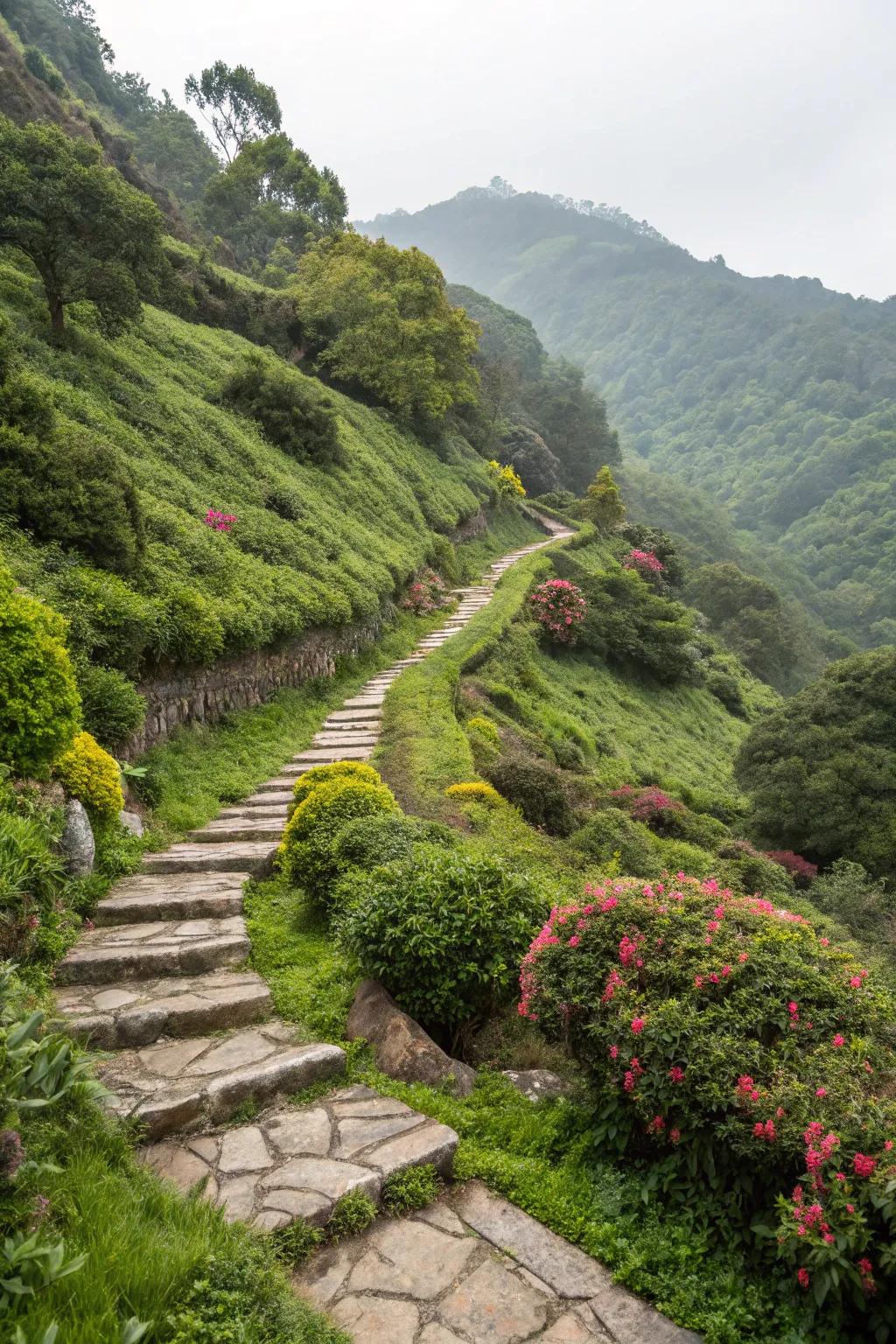
Lay natural stone paths for an organic and aesthetic appeal. Every time I use stone paths, they seamlessly connect different areas while enhancing the slope’s natural beauty.
Check these products out:
- Natural Stone Paver Kits: Create stunning stone paths effortlessly for your garden with these durable natural stone paver kits.
- Landscape Edging Stones: Define your stone paths elegantly using landscape edging stones and enhance your outdoor spaces.
- Stone Pathway Mold: Design custom stone paths easily with this reusable stone pathway mold for a unique garden look.
15. Diverse Plant Selection
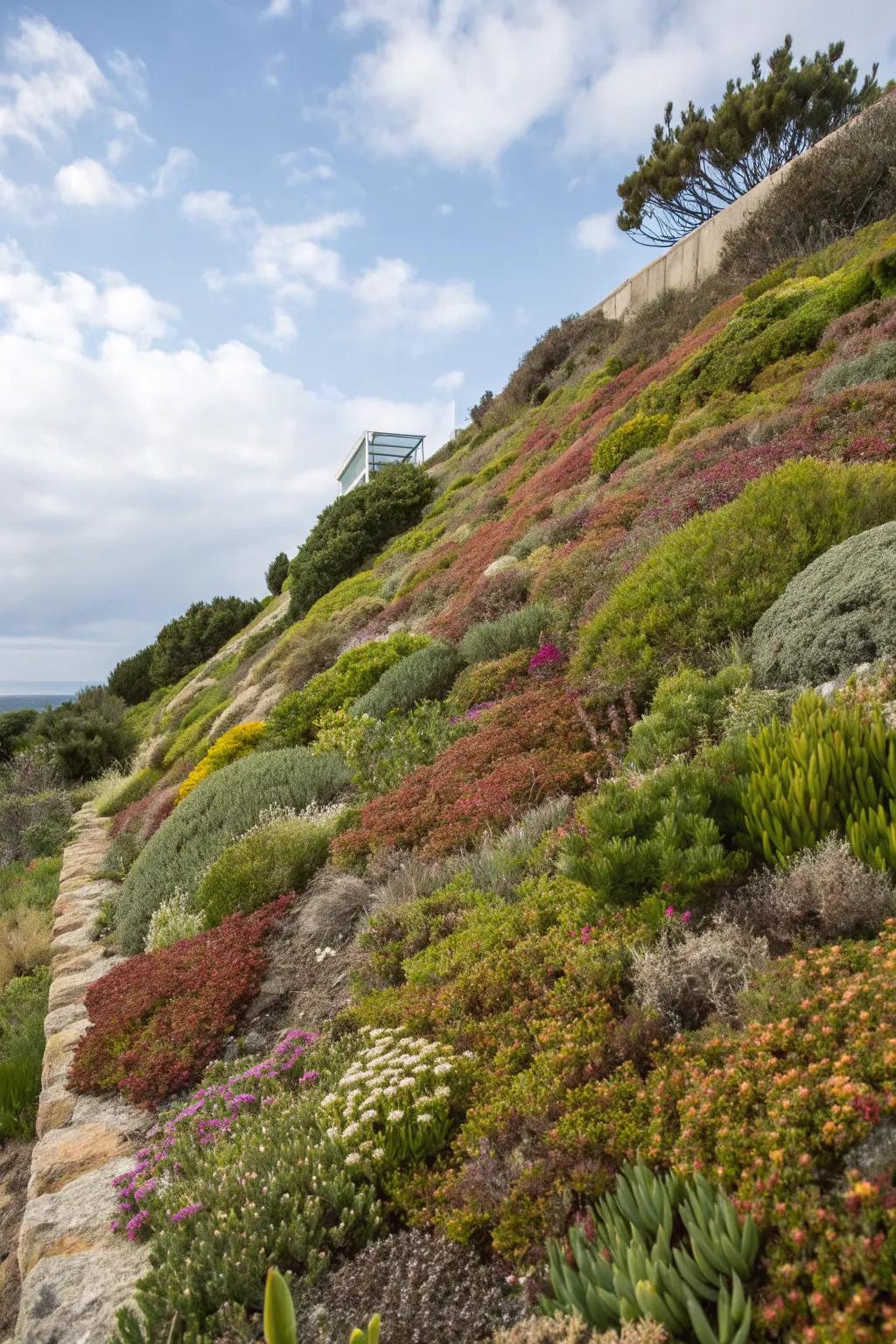
Opt for a diverse plant selection that thrives on slopes and requires minimal care. My personal favorites are hardy, native plants that adapt well and provide year-round interest.
You might like:
- Native Plant Seed Mix: Enhance your slope with native seed mix for a vibrant, low-maintenance landscape all year.
- Drought-Resistant Perennial Plants: Choose drought-resistant perennials to ensure lush greenery without the hassle of constant watering.
- Groundcover Plant Collection: Invest in groundcover plants for a stunning, erosion-controlled slope that thrives effortlessly.
16. Shade-Loving Plants
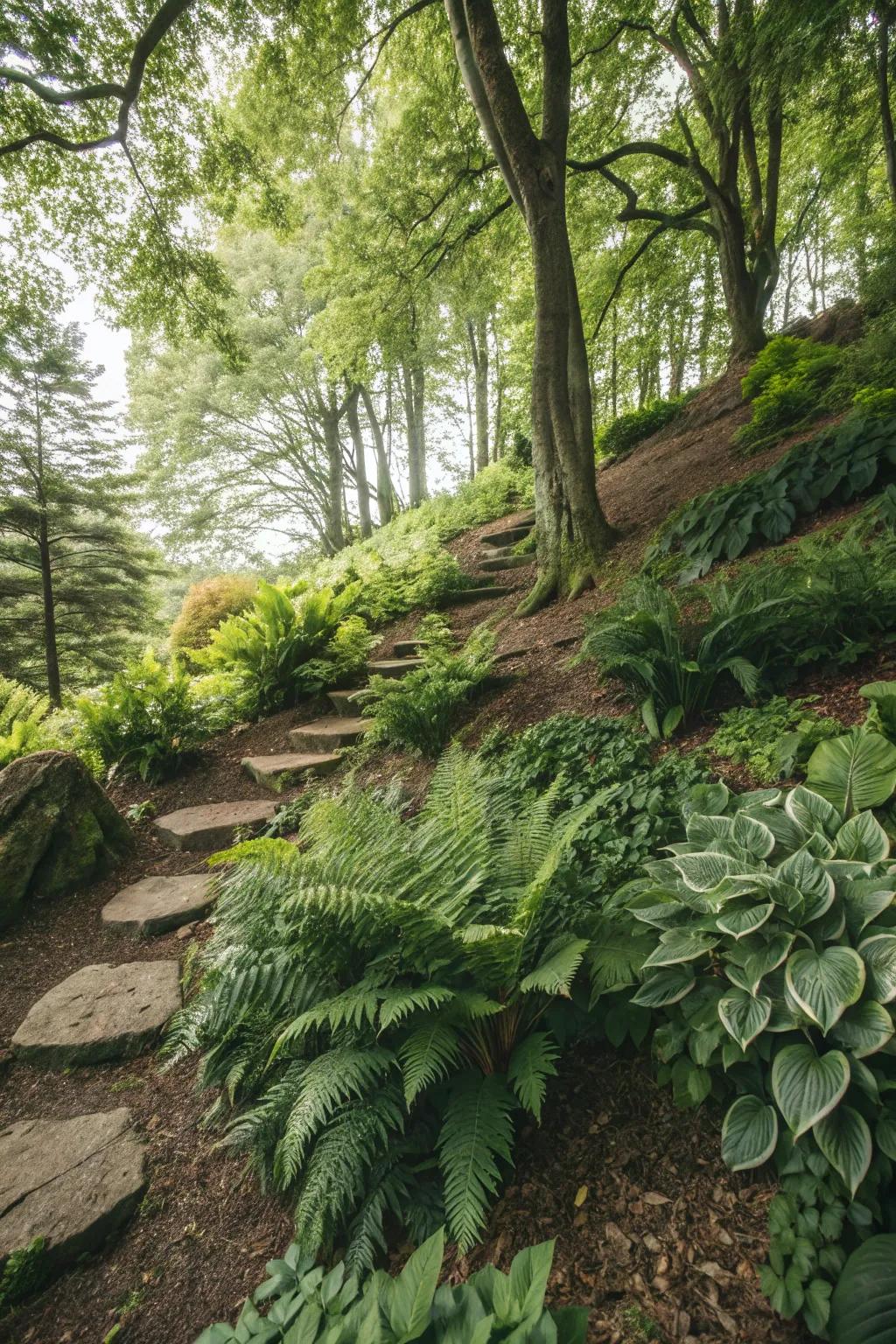
For shaded slopes, opt for shade-loving plants like ferns and hostas. They thrive in low-light conditions and add a lush, forest-like feel.
Possibly handy products:
- Shade-Tolerant Fern Seeds: Enhance your shaded slopes with lush ferns. Perfect for creating a forest-like atmosphere.
- Shade-Loving Hosta Bulbs: Plant hosta bulbs to add vibrant greenery to your shaded garden spaces effortlessly.
- Natural Stone Stepping Stones: Create a charming pathway with natural stone steps, ideal for navigating steep, shaded slopes.
17. Succulent Paradise
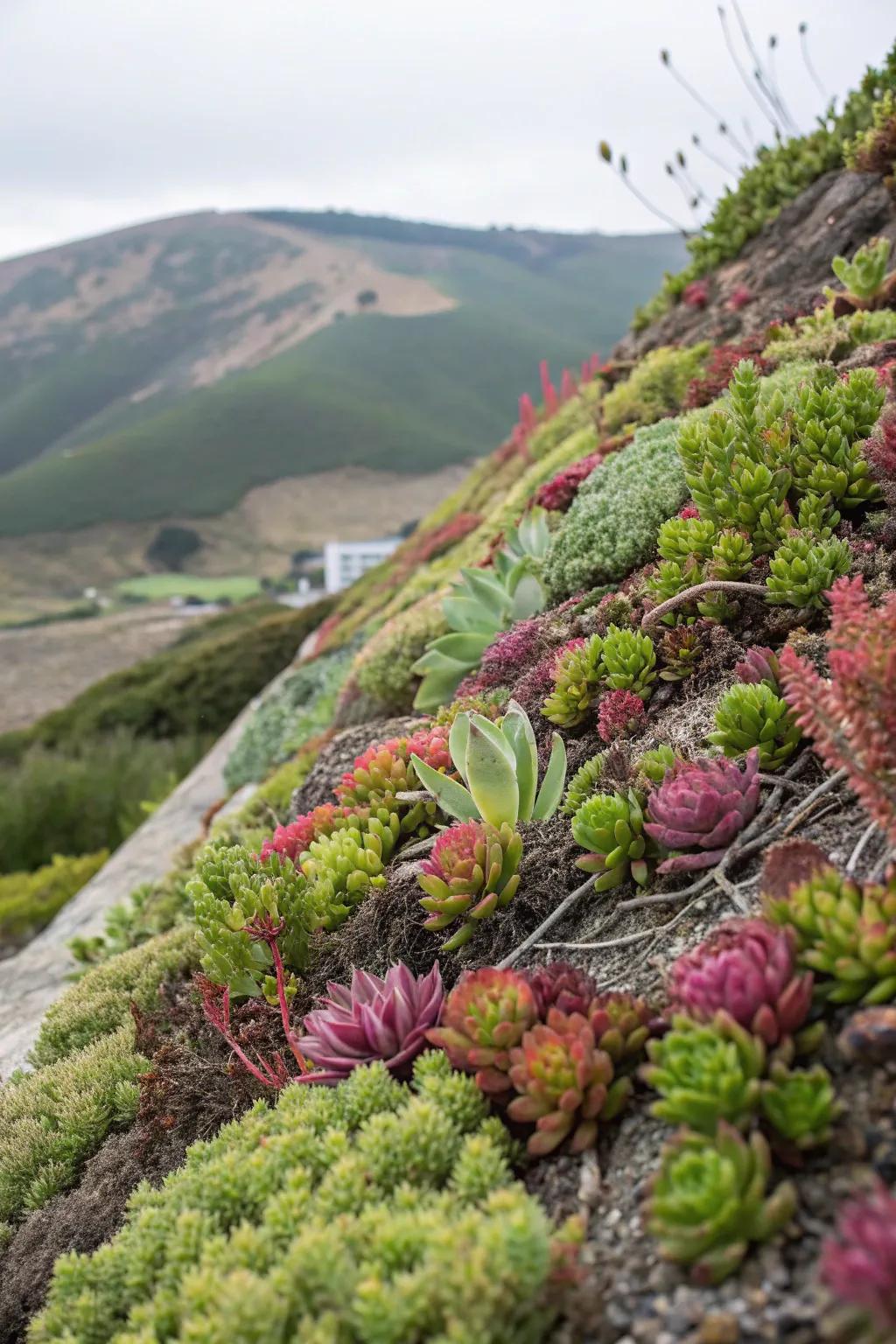
Create a succulent paradise with hardy, drought-resistant plants that thrive on slopes. Succulents are my go-to for adding texture and interest without the fuss.
Possibly helpful picks:
- Variety Pack of Succulent Plants: Discover the joy of easy maintenance with a beautiful mix of drought-tolerant succulents.
- Well-Draining Potting Mix for Succulents: Enhance root health and growth with premium well-draining soil, perfect for succulents.
- Terracotta Planters with Drainage Holes: Upgrade your garden style with durable, breathable terracotta planters complete with drainage.
18. Wildflower Meadows
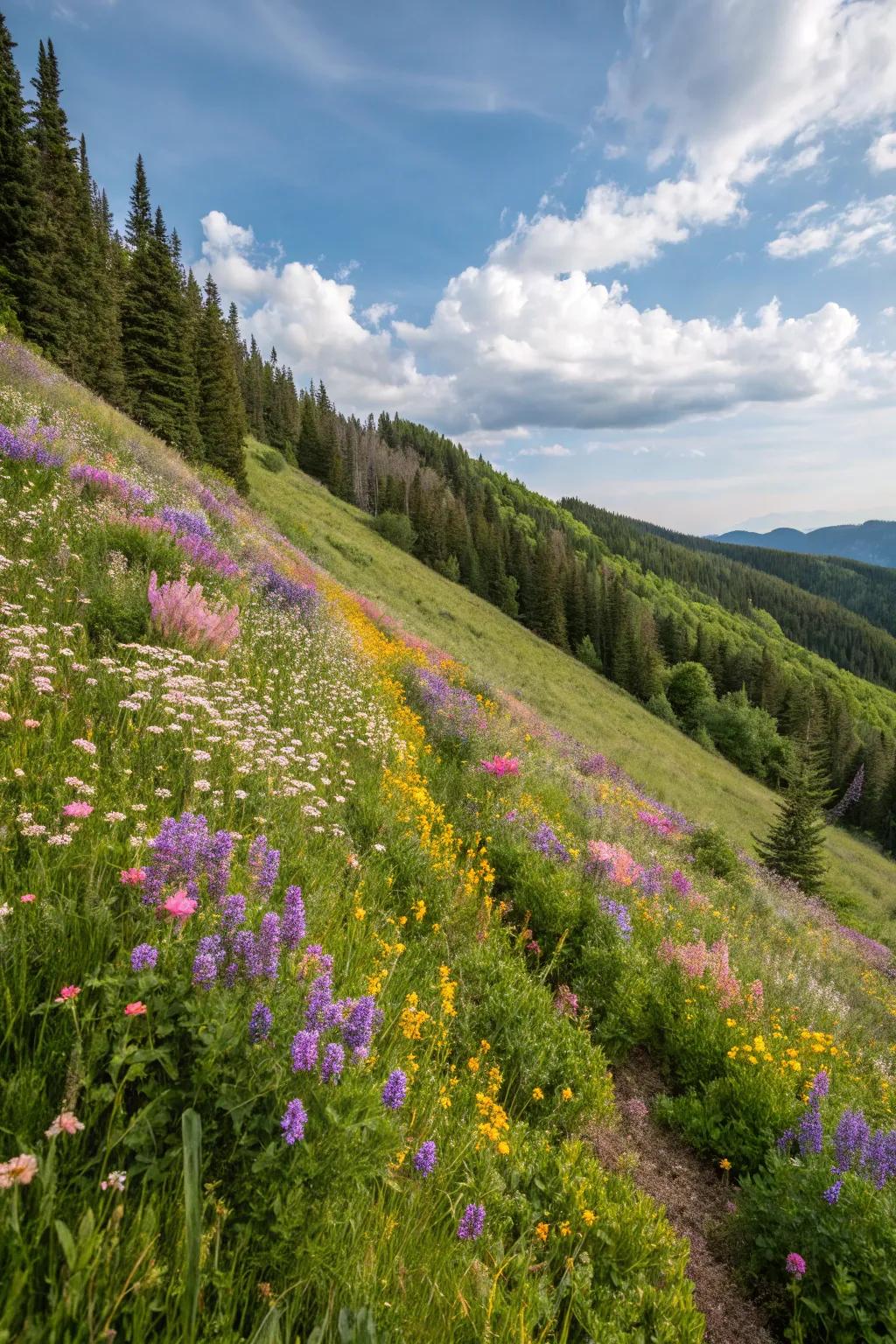
Consider transforming your slope into a wildflower meadow for a low-maintenance and vibrant display. I adore how wildflowers can easily blanket a hillside with minimal effort.
Consider these options:
- Wildflower Seed Mix: Transform your slope with this vibrant wildflower seed mix. Easy to sow and maintain.
- Garden Soil Enhancer: Boost your wildflowers’ growth with quality soil enhancer. Perfect for healthy and vibrant blooms.
- Eco-friendly Fertilizer: Nourish your wildflower meadow naturally with this eco-friendly fertilizer. Promote robust plant health.
19. Native Grasses
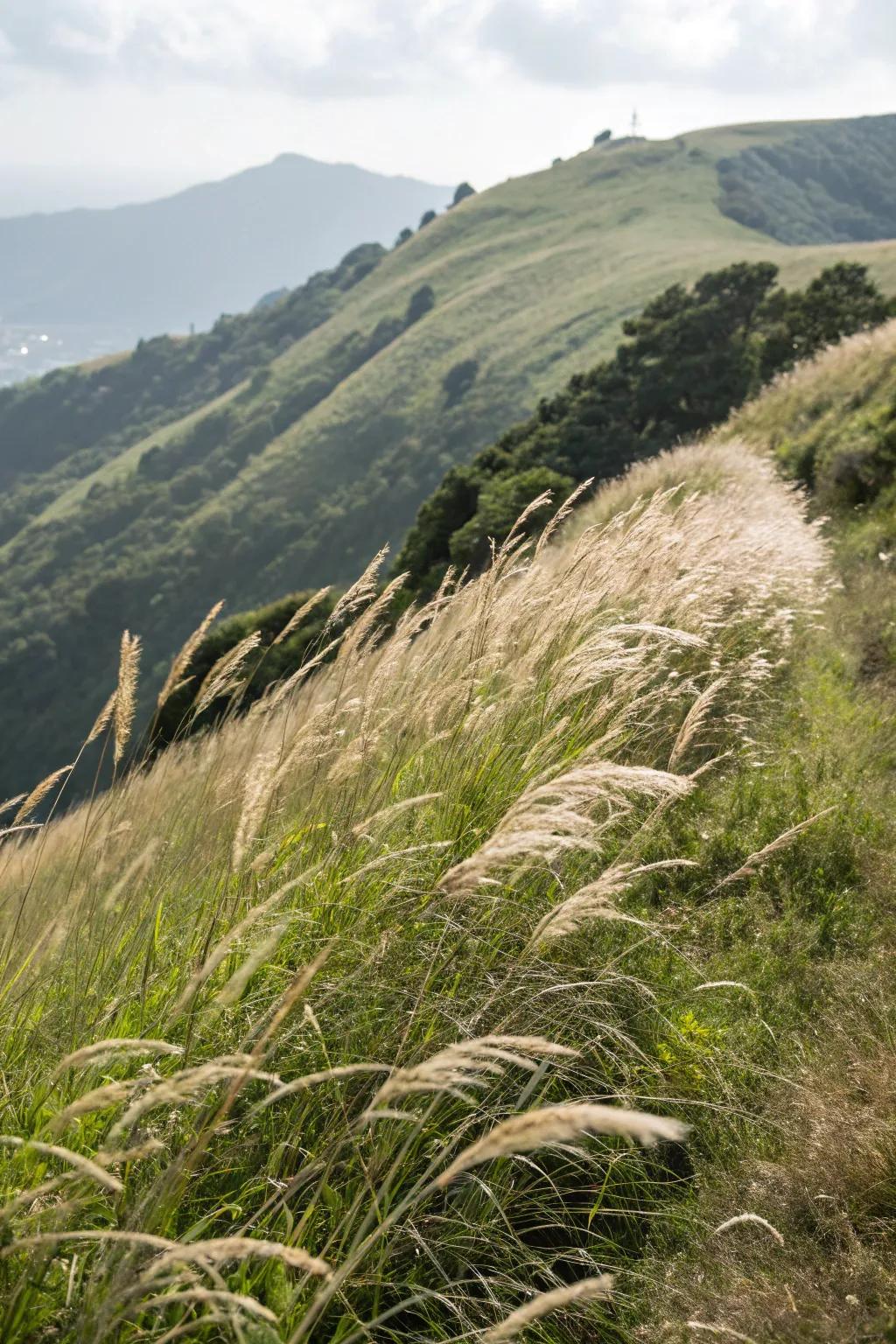
Plant native grasses that sway gracefully in the breeze while requiring little maintenance. I’ve seen how they beautifully fill spaces and control erosion naturally.
A few choices to try:
- Native Grass Seed Mix: Transform your slope with easy-to-grow native grass seeds, enhancing beauty and erosion control.
- Erosion Control Mat: Secure your slope effectively with an erosion control mat, ideal for steep landscapes.
- Garden Hose Sprinkler: Effortlessly water your native grasses with a durable and easy-to-use garden hose sprinkler.
